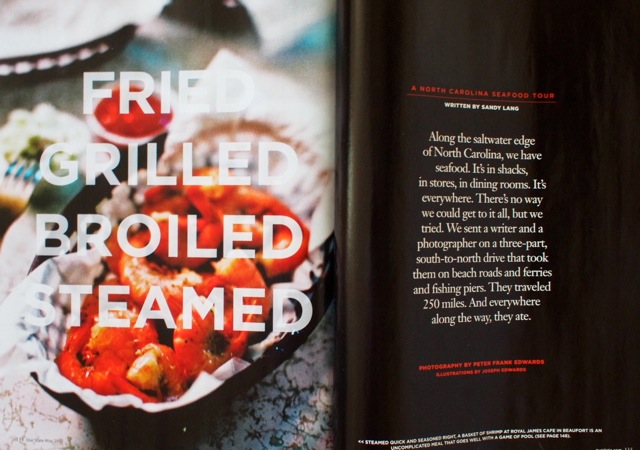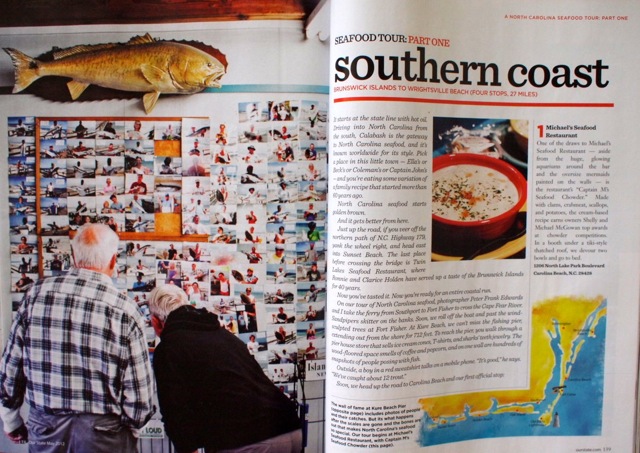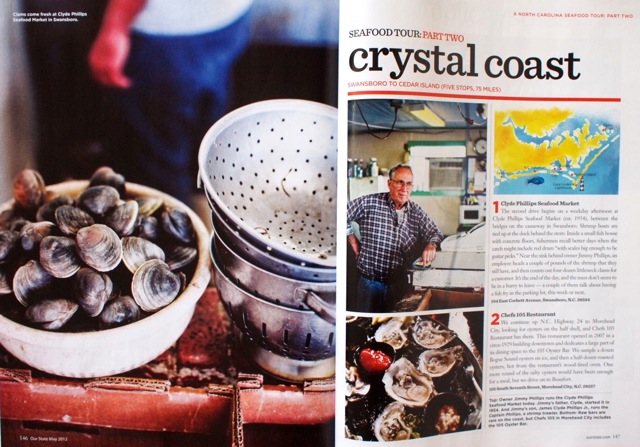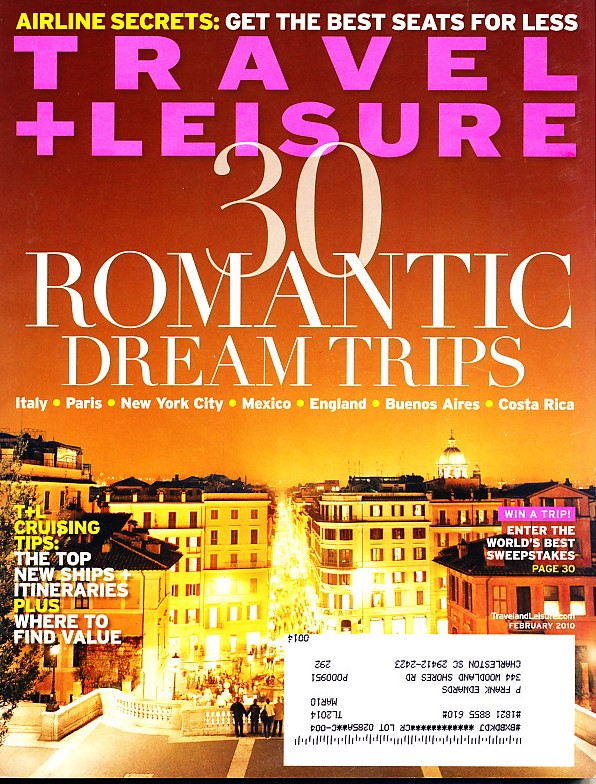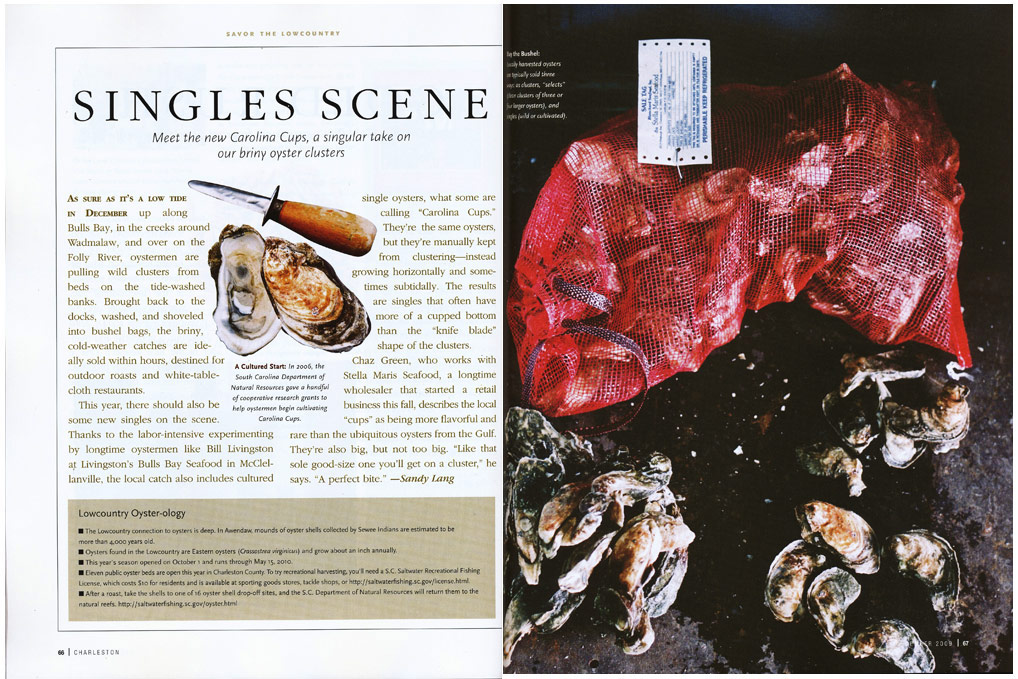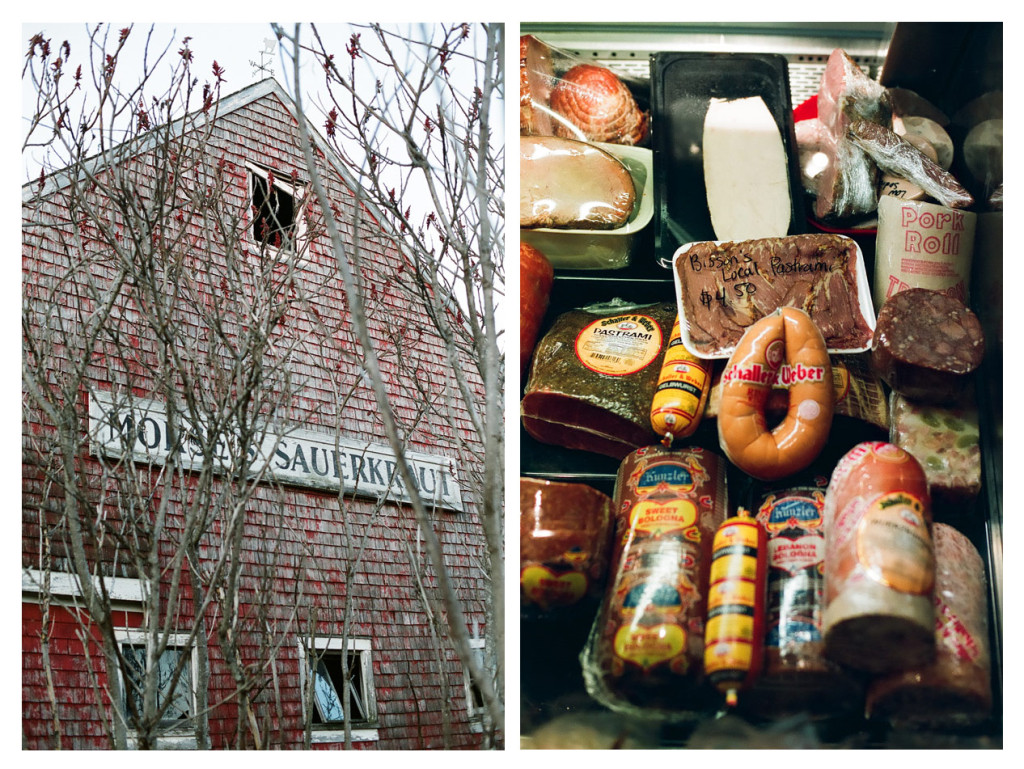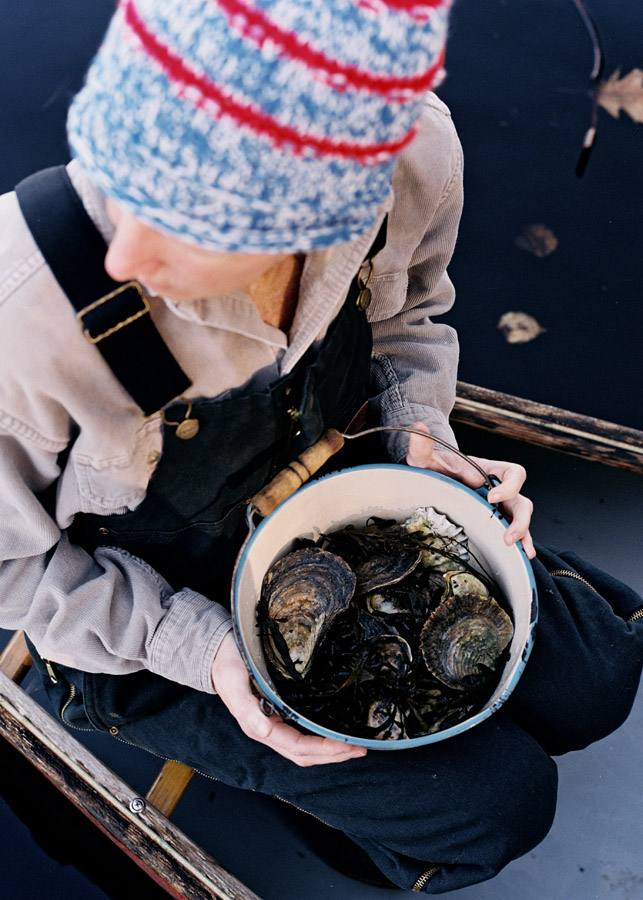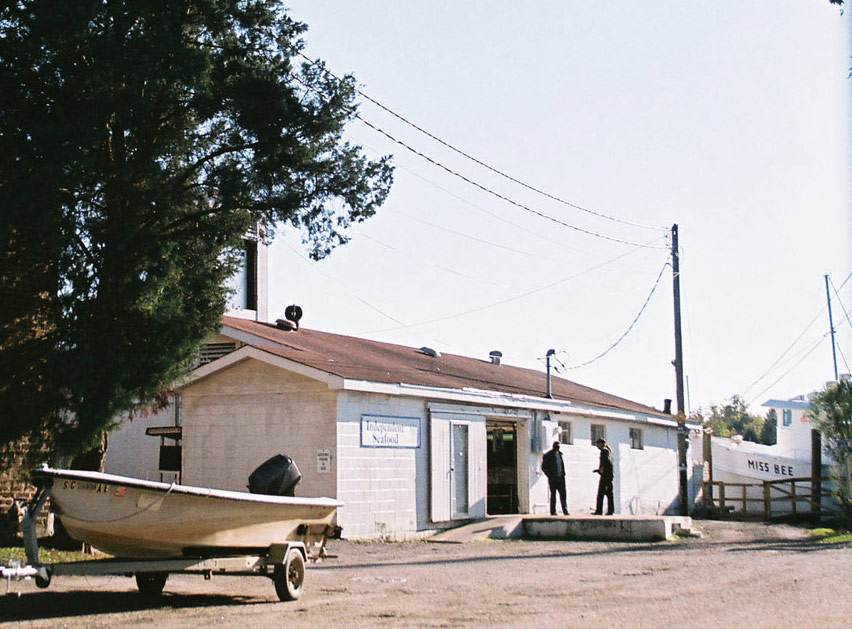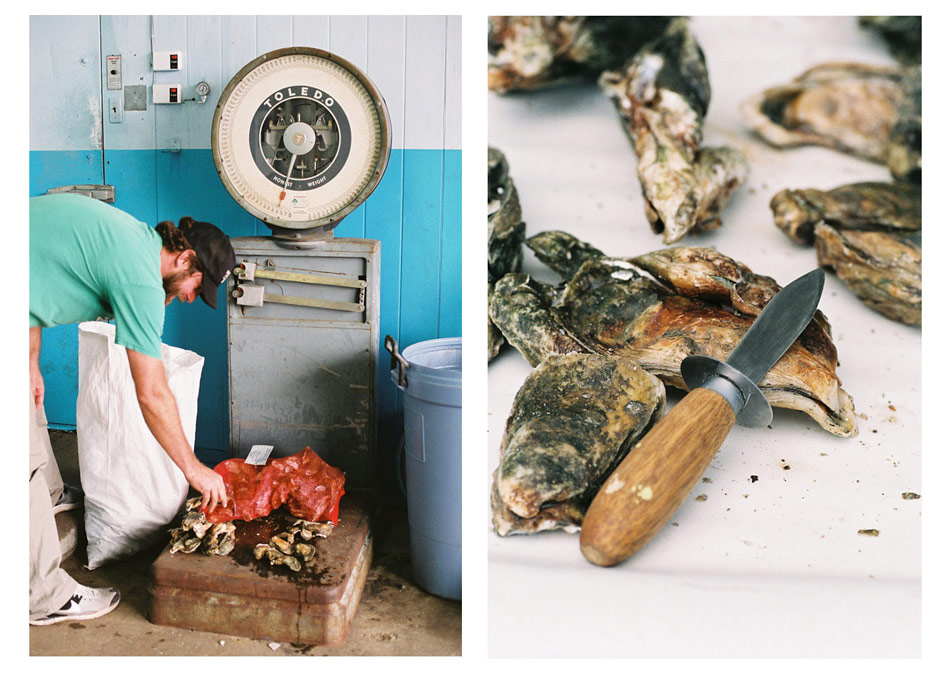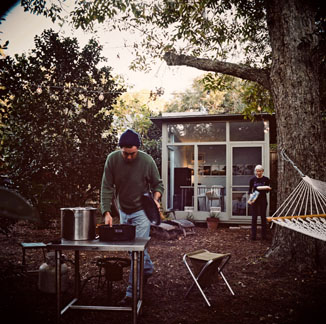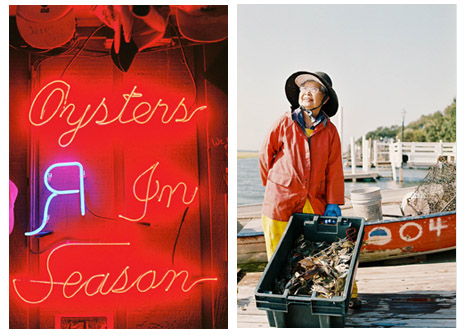
We just spent a couple days and nights along the road just inside the creeks of Murrells Inlet, SC where no less than 30 seafood restaurants are set in with houses and a few other businesses like hair salons, boat yards and bait shops. The air smells like pluff mud and salt, and at night, of hushpuppies frying. For me, memories are locked into that scenery, that air. I grew up a few miles up the coast, and on prom night we’d all go out for seafood first in Murrells Inlet, already wearing our tuxedos, gowns and corsages. In college we’d drive down to the boat landing and sit on car hoods, watching the marsh and moonlight. (Is that what we were doing?)
It was good to get back, always is. A curiosity and attraction of the Inlet is the longtime restaurants. In a world where so much changes, it’s a comfort to see there’s still a Lee’s Inlet Kitchen (in the same family since 1948), and that the best bar is owned by a Vereen, one of the oldest families in Murrells Inlet. That bar (also a restaurant) is Russell’s, and Russell Vereen is a fellow Socastee High graduate, a guy with a thousand stories. No, more than that, and always changing. He likes to buy up old signs from the Inlet, or save them from certain trash… pointed at one on the wall of the barn behind his restaurant that had been cracked into several pieces by a runaway car. Russell salvaged that “Welcome to Murrells Inlet S.C. Seafood Capital” sign – put the planks back together – and says he often finds people sitting in the rocking chairs below the wall of signs, getting their picture taken.
We met Sean English and Denny Springs over at Harrelson’s Seafood, a fresh fish counter where they also have a kitchen and are trying to be the very best at making a fried grouper sandwich. With every order they cut a nice-sized hunk of fresh grouper and fry it just right. And if you order the fish tacos with tuna, the big, meaty chunks of fresh tuna are blackened on the outside and still perfectly pink inside. Denny’s another Socastee grad and his grandfather’s wife, An Mathis Springs, is one of the most amazing women in Murrells Inlet. Born in Vietnam, she came to Murrells Inlet in the early 1970s and starting catching and selling minnows for bait, walking on the mud flats with minnow traps on her back. She later turned to catching blue crabs, and still, at 70 years old, she goes out several times a week to set and pull up her traps, then makes fat crab cakes and delicate crab egg rolls to sell.
We also hung out with Gaston “Buddy” Locklear, an old friend who used to paint designs on Perfection surfboards for Village Surf Shoppe, which is still open, a legend in Garden City. He now paints on canvas and wood, is one of the most prolific artists I’ve ever seen… sometimes covering his finished paintings in a coat of epoxy, just like with surfboards. He’s part of this very cool co-op gallery in Murrells Inlet called the Ebb & Flow. And that day, he showed us a just-finished painting of the marsh island in Murrells Inlet where Drunken Jack’s restaurant has been letting goats roam since the mid-1980s… to keep the brush down for better inlet views.
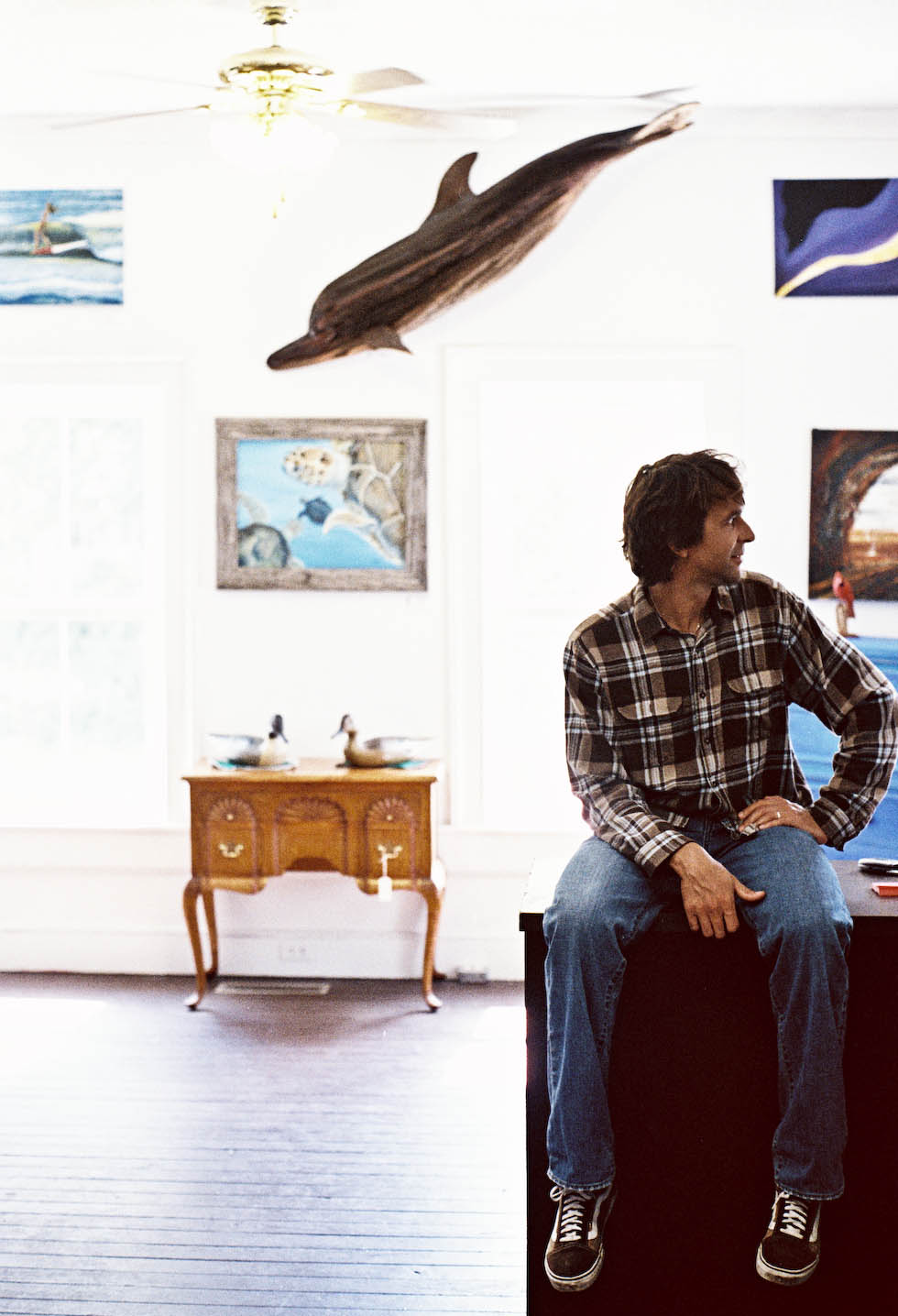
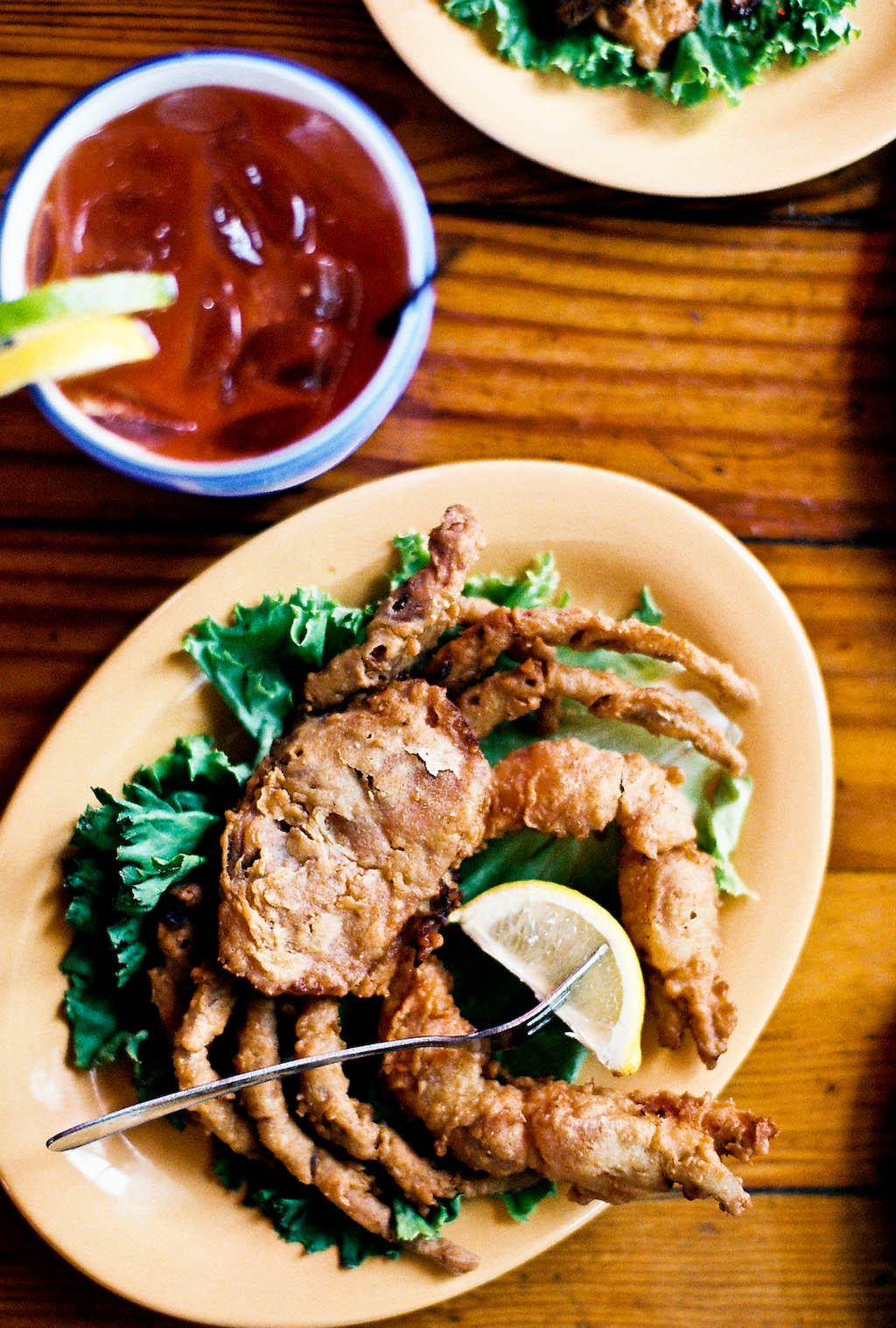
With so many restaurants in Murrells Inlet (and some of them changing names and owners practically with the seasons), there’s certainly some mediocre food being served. But if you want a perfectly fried softshell crab (and a nice Bloody Mary too) there’s the tiny pink-roofed restaurant on the north end, the Inlet Crab House & Raw Bar. I’ve been there in winter too, for the oyster roasts and beer… just right with its wooden tables and booths, worn concrete floor and framed pictures of old fishing trips.
More about Murrells Inlet soon…
– September 2008, Sandy Lang
